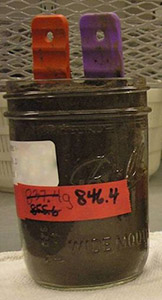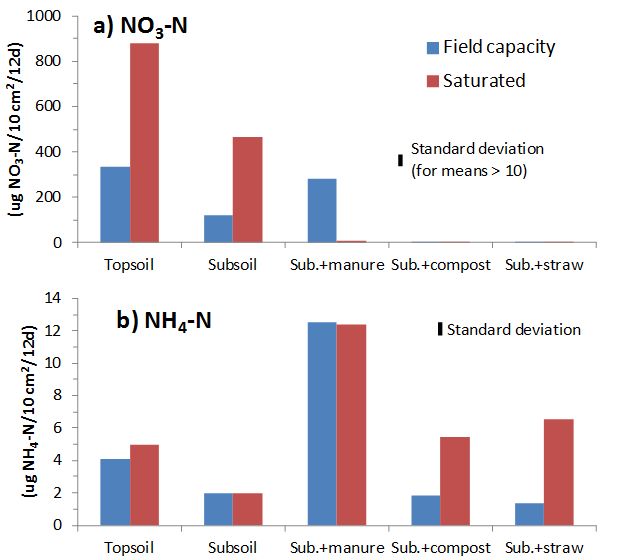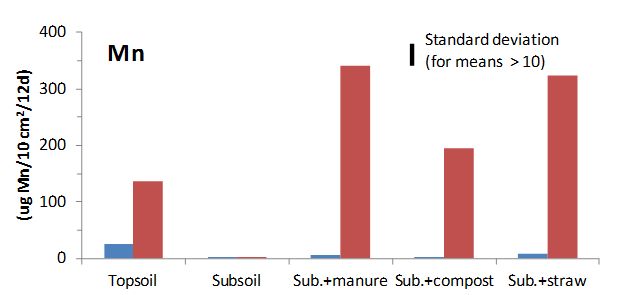Customer Information
Class Project on Nitrogen Transformations as Affected by Soil Amendment and Flooding

Figure 1. Glass jar with PRS® Probes and amended soil.
Class: CE 543, Washington State University (Winter 2012)
Instructor: Dr. Jim Harsh
Objectives: The class project was developed to teach students about soil nitrogen transformations (immobilization into microbial biomass, mineralization, nitrification and denitrification) and how they can be monitored. The project involved evaluation of soil amendments with different sources of carbon and C/N ratios, water content, and soil position in the profile.
Materials and Methods
Subsoil (B horizon) and topsoil (A horizon) were collected locally at the Cook farm. The soils were close to field capacity and were not dried to avoid drying effects on N transformations. Soils were sieved and homogenized in the classroom, and subsamples obtained for moisture determinations.
Five treatments were set up:
- Soil A horizon
- Soil B horizon
- Soil B horizon + 5% compost, by mass (as obtained)
- Soil B horizon + 1% chicken manure by mass
- Soil B horizon + 2% wheat straw by mass
Treatments were established in Mason jars (Fig. 1). One set of samples was kept at field moisture, while a second set was moistened to near saturation — wet, but without standing water. One pair of PRS® Probes (anion and cation) was inserted in each jar. Total mass was monitored to ensure soil moisture was maintained. Each treatment was done in triplicate.
After 12 days, PRS® Probes were retrieved, washed and returned to Western Ag Innovations for analysis. Students also determined soil microbial biomass and soil inorganic N.
Results
Soil N supply rates determined with PRS® Probes were strongly affected by treatments (Figure 2). Compost or straw addition reduced NO3-N supply rates due to immobilization or denitrification, while manure addition increased NO3-N supply rates when soil was at field capacity due to increased mineralization and nitrification, but reduced NO3-N supply rates when soil was saturated. Saturated soils had higher NO3-N supply rates for unamended soils due to increased diffusion without increased denitrification associated with addition of available C substrates. Supply rates of NH4-N were small relative to supply rates of NO3-N, but did indicate higher NH4-N supply rates with manure addition and under saturated conditions.

The contribution of denitrification to N transformations was indicated by increased Mn (Figure 3) and Fe supply rates. Under anaerobic conditions, Fe and Mn in soil are converted to more mobile forms when utilized as electron acceptors by microorganisms instead of O2.

The use of PRS® Probes also allowed students to observe impacts of amendments and flooding on P, S, K and micronutrient supply rates.
